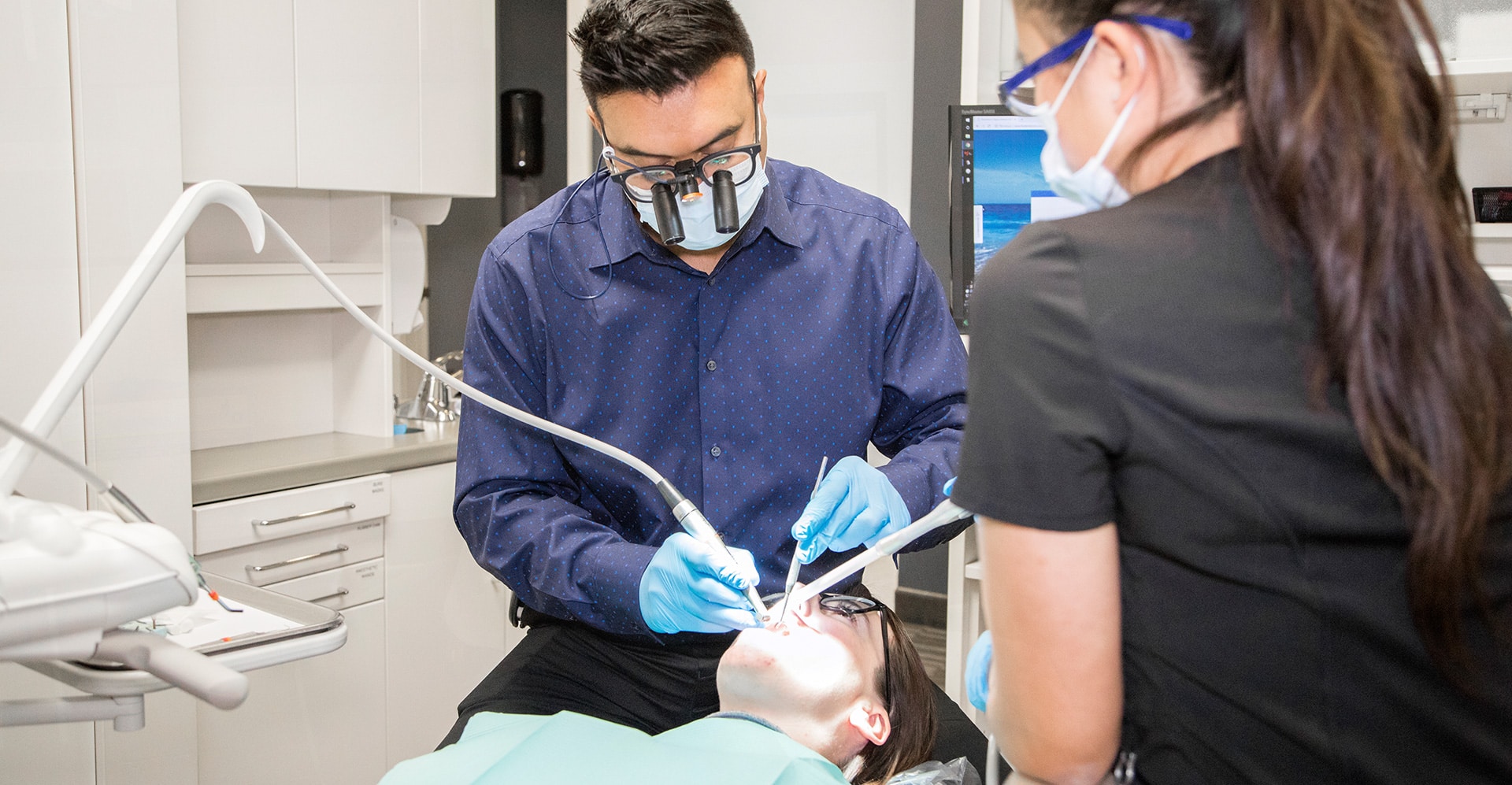Among adults in the developed world, periodontal disease (also known as periodontitis and gum disease) is the leading cause of tooth loss. Periodontitis is a disease that develops when toxins found in plaque cause irritation or inflammation of the gingiva (gum tissue) within the mouth. This can ultimately lead to the destruction of the gum tissue and the underlying bone due to the bacterial infection that develops, commonly known as gingivitis. There is also a risk of tooth loss or loose teeth as a result of untreated periodontal disease.
There are many types of periodontal disease that can affect your teeth including aggressive, chronic, necrotizing periodontitis, and periodontitis associated with systemic diseases. In order to prevent further bone loss and tissue damage caused by clinical periodontal disease, each type of periodontal disease has its own distinct symptoms and characteristics that should be addressed by your dentist as soon as possible.

It is extremely important to keep in mind that periodontal disease can progress without causing any signs or symptoms, such as pain, or any visible signs or symptoms. The importance of regular dental checkups can’t be overstated. There are many reasons for this. The following are some of the most common signs and symptoms of periodontitis that you might encounter.
It is important to seek the advice of a general dentist or periodontist as soon as possible if you exhibit any of these signs or symptoms:
Longer-looking teeth – Gum recession can be caused by periodontal disease. Bacteria produce toxins that can destroy the supporting tissue and bones, making the teeth appear longer and the smile appear
In order to prevent further damage to the gum tissues and jawbone, it is necessary to halt the progression of periodontal disease before it causes further damage to them. In order to determine the progress of the disease, the dentist will first assess the whole mouth in order to determine how the disease is progressing. The dentist may prescribe antibiotics as part of a treatment plan that includes both nonsurgical and surgical measures to treat the bacterial infection after a diagnosis has been made.
The pockets (under the gumline) of the teeth will be completely cleared of debris using a procedure known as scaling and root planing. If there are any bacteria left in the pockets, they may be treated with antibiotics in order to enhance healing and kill any bacteria left behind.
There are several different ways in which severe periodontitis can be treated, including:
Please consult your dentist if you have further questions regarding periodontal disease symptoms.
Our dentists pride themselves on putting your needs first and offering FREE PARKING — a rarity for downtown dentists. We care and we listen. Our dentists have years of experience and are here to serve your needs at every appointment. If you have a question about your smile or need a second opinion, we’re here to help.

The Dental Room has been serving the community for several years in Downtown Calgary. We provide our patients with high-quality, affordable, and comprehensive dental care. In our general dentistry clinic, we utilize the latest in dental technology and techniques. Our goal is to provide a healthy and beautiful smile for a lifetime.
| Monday | 10:00 a.m. – 06:00 p.m. |
| Tuesday | 09:00 a.m. – 02:00 p.m. |
| Wednesday | 09:00 a.m. – 05:00 p.m. |
| Thursday | 09:00 a.m. – 05:00 p.m. |
| Friday | CLOSED |
| Saturday | CLOSED |
Copyright © The Dental Room All Rights Reserved